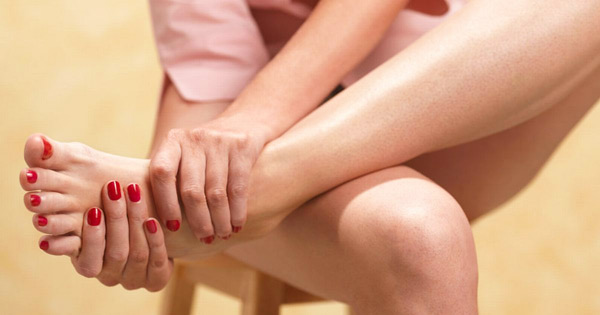 Novel research reveals that the risk of acute gout attacks is more than two times higher during the night or early morning hours than it is in the daytime. The study published in Arthritis & Rheumatology, a journal of the American College of Rheumatology (ACR), confirms that nocturnal attacks persist even among those who did not consume alcohol and had a low amount of purine intake during the 24 hours prior to the gout attack.
Novel research reveals that the risk of acute gout attacks is more than two times higher during the night or early morning hours than it is in the daytime. The study published in Arthritis & Rheumatology, a journal of the American College of Rheumatology (ACR), confirms that nocturnal attacks persist even among those who did not consume alcohol and had a low amount of purine intake during the 24 hours prior to the gout attack.
The body produces uric acid from the process of breaking down purines — natural substances in cells in the body and in most foods — with especially high purine levels found in organ meat, seafood, and alcohol (yeast). Acute gout flares are triggered by the crystallization of uric acid within the joints, and experts believe these flares are “among the most painful events experienced by humans.” The ACR estimates that more than 8.3 million Americans suffer from gout — making it the most common inflammatory arthritis in the U.S.
“It is speculated that lower body temperature, nighttime dehydration, or a nocturnal dip of cortisol levels may contribute to the risk of gout attacks at night,” explains lead author Dr. Hyon Choi, currently at Massachusetts General Hospital/Harvard Medical School (formerly at Boston University School of Medicine). “Despite the possibility of a nighttime link to gout, no study prior to our current investigation has looked at the association between gout attack risk and the time of day.”
The Boston Online Gout Study is a case-crossover study that investigated triggers for gout attacks from 2003 to 2013. The research team recruited 724 gout patients who were followed for one year via the internet. Participants were asked to provide the date and hour that a gout attack occurred, as well as to answer questions about their symptoms, medication use, and certain risk factors (such as alcohol use and seafood consumption) during the 24 and 48 hours preceding the gout flare.
On average, participants were 54 years of age and were primarily white (78%) men (89%), and more than half were college educated. During the gout flare or the time between attacks (called “intercritical periods”), roughly 68% of subjects consumed alcohol, 29% took diuretics, 45% used allopurinol, 54% used nonsteroidal anti-inflammatory drugs (NSAIDs), and 26% took colchicine.
Findings indicate that participants experienced 1,433 gout attacks — 733 in the overnight hours (midnight to 7:59 a.m.), 310 in the daytime (8:00 a.m. to 2:59 p.m.), and 390 in the evening (3:00 p.m. to 11:59 p.m.) during the one-year study period. The risk of a gout flare was 2.4 times higher overnight and 1.3 times higher in the evening compared to daytime hours.
Furthermore, researchers found that this risk persisted even among those with no alcohol intake and low purine intake during the 24 hours prior to the gout attack. These associations remained after accounting for sex, age, body mass index (BMI), and use of diuretics, gout medications, and NSAIDs. “Our findings provide the first prospective evidence that the risk of gout flares is higher during the night and early morning hours than during the day,” concludes Dr. Choi. “As a result of our study, prophylactic measures that prevent gout flares, especially at night, may be more effective.”
This study was funded by grants from the National Institutes of Health (AR47785), the Arthritis Foundation, and the American College of Rheumatology Research and Education Fund.